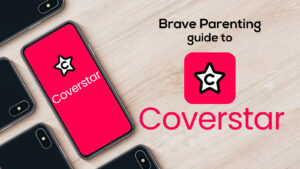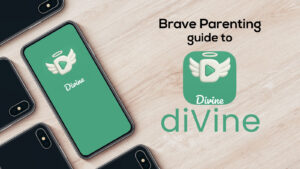Battling For Souls
There are a few gigantic corporations brutally fighting it out in order to win the souls of our children (and money in their pockets.) By ‘souls’ we mean their entire livelihood and by ‘money’ we mean many millions.
Aside from Google, who is a clear pack leader with their efforts to take over the classroom, three social media giants: Facebook, Instagram (now owned by Facebook), and Snapchat are shamelessly copying popular features from one another to captivate the attention of our children. Last year, Snapchat pulled ahead of their two competitors capturing 79 percent of our teenagers time and lives. It was the first year Facebook didn’t take the crown. Everyone took notice and action.
If disappearing pictures work so well for Snapchat, why not add them to Instagram?
If stories work so well for Snapchat, why not add them to Instagram and Facebook?
With the addition of the features, social media gurus are now promoting Instagram as the number one app to be on. The decline of Snapchat use is great but this means Instagram (with all of its Snapchat-like features) will be where our kids will want to be.
In the past, Brave Parenting recommended Instagram as a initial introduction to social media. As it is with technology, change happens quickly and with that our recommendation changes.
What You Need To Know About Instagram
Instagram, boasting 600 million users, is an all-encompassing app for both teens and adults alike. For teens it is popularity, private and untraceable conversations, disappearing pictures and content, self-promotion, pornography, and connecting/hooking up – all in one precarious app.
It is imperative to understand the app is FREE because they can SELL the pictures and videos you post and because advertisers pay big money to have the attention of young children and teens. If you are not intimately familiar with app, here is what you need to know:
- The newest feature is Instagram Direct, allowing the sending and receiving of “expiring” pictures and videos. This is how children will share their nudes, deal drugs, and bully – among other things. Users can block certain people from sending direct messages or photos but cannot block Instagram Direct completely.
Notwithstanding, there remains easy ways to get screen shot of a highly desired Instagram Direct photo. Which subsequently reiterates the fact NOTHING IS PRIVATE OR ACTUALLY DISAPPEARS online. - Stories, like on Snapchat, are an additional feature recently added. In their attempt to “make deeper connections” and help people “tell a richer story” they have added features allowing for tagging and website links within a story as well as story searching with hashtags and locations.
- Instagram was recently deemed the worst app for mental health and wellbeing in a recent study. App use leads to increased anxiety, depression, bullying and FOMO. Additionally, this app is well known to destroy young girls’ self-worth with its comparisons and competition.
- Hashtags are huge and allow Instagram users to search and troll an archive of subjects such as #snapchatnudes #kikme #suicide
- Using the “BLOG” option under settings allows users to gain unfiltered access to Facebook, Twitter, Google and Tumblr (known for an abundance of porn) – all without ever leaving the app. Combined with the ability to CLEAR SEARCH HISTORY this is bad news for parents.
- Instagram’s MAP setting can easily be turned ON to allow photo and video locations to be tracked. This is specific concern for children who have a PUBLIC profile as strangers will be able to know their exact location.
- PRIVATE accounts can prevent unwanted people from viewing your child’s content. You must approve any requests to follow your child. A PRIVATE account, however, does NOT prohibit your child from searching for and following inappropriate people themselves.
- SPAM and FINSTA are second accounts children create to hide content. They will maintain their original account (with their best content and where Mom follows me) while their SPAM or FINSTA account is for more private communication with close friends.
- Soon, Instagram wants you to do your shopping through the app.
- Instagram’s user agreement states you must be 13 years old to have an account. This isn’t because they want to protect your 12 year olds but for them to be protected under the COPPA law. These terms of service also give Instagram the right to USE or SELL any of your pictures (where they will get paid but you will not), personal information, as well as likes and preferences.
What You Need To Do As A Parent
Foremost, consider these BEST PRACTICES when you decide to allow your child to have a social media account, whether that is Instagram or not.
- Allow ONLY ONE platform. There is no need to spread the addiction and dangers across multiple platforms.
- Set up account WITH your child. You need to help create the username (will it be their actual name?) as well as setting up a password ONLY YOU know. Parents need to coach their kids through using social media and this can only be done having sole access to the password. Without rules or standards for use, cyberbullying and shaming is completely out of control among adolescents and teens. Parents need to teach good character by monitoring their activity and teaching them kindness, self-control, and self-worth.
- Set account to PRIVATE. The global social media population does not need to have access to your child.
- Allow friends/followers with ONE DEGREE OF SEPARATION. Think “Stranger Danger.” If you wouldn’t allow your child to hang out alone with someone – they don’t need to be friends on social media. They purpose of a personal social media should never be to accumulate thousands of followers – that is the entirely wrong motive. One degree of separation with friends.
- Accountability: ensure there is someone else (or yourself) following your child who can report back any alarming activity. This can be an Aunt or Uncle, older sibling or cousin, mentor, former babysitter, or whoever you have.
- No Selfies. This trend is completely normalized by our culture. Don’t conform. There is nothing humble, modest, or healthy about posting pictures of yourself seeking validation and worship.
Due to the new evasive features Instagram now offers along with the lack of parental monitoring abilities, Brave Parenting no longer recommends this app as an introductory app. Compound the new features with the research verifying the mental health issues and it’s difficult to even recommend it for adults. It’s voluminously attractive features are enough to captivate and addict a strongly self-disciplined adult. How much more would it capture a brain-still-developing and maturing child?
Consider whether or not Instagram is truly safe or necessary for your child to use. If they are in middle school or younger, our stance is now to WITHHOLD Instagram to at least high school and maybe not even then depending on the child. Every child is different, but for those who love to obsess, consume media, embrace cultural trends and take risks – this is most likely too dangerous for them. More appropriately stated, it is just too good for them to resist, making it dangerous.
Your decision to allow or prohibit stands to eternally affect who your child becomes. The app will test their character, integrity, morals, and decisions. Indecision as a parent is not an option; it does not acquit you of responsibility. The bottom line is this: if you allow it, you are responsible for monitoring and training your child how to use it (not abuse it.)













